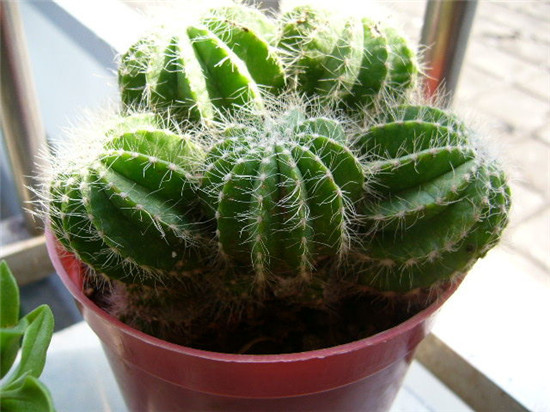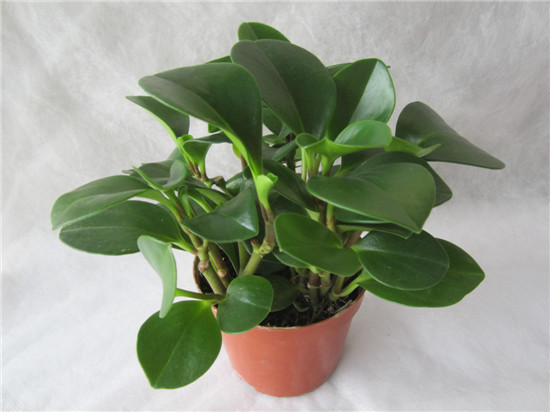Which is the best plant to protect against computer radiation?
With the improvement of life, high-tech products have gradually become our new working partners, so how can we prevent computer radiation? Come with me and have a look.

Are potted plants useful against computer radiation?
Potted plants have many other functions in addition to beauty. For example, in many potted plants, many plants have the role of purifying the air, they can absorb nitrogen oxides, methane and other harmful substances in the air. But are potted plants useful in protecting against computer radiation?
Experts point out that potted plants protect against computer radiation is actually a gimmick that outweighs the actual effect. Cactus, aloe and other plants can indeed absorb ultraviolet rays in sunlight, but the principle of computer radiation is different from ultraviolet radiation. It is a kind of electromagnetic wave, which can not be absorbed by potted plants.
However, potted plants have a certain weakening effect on computer radiation, mainly because electromagnetic waves cannot pass through leaves, bulbs and other objects, so placing potted plants in front of the computer can resist computer radiation, but it is not absorbed. Computer radiation can be harmful to these potted plants and, in severe cases, can lead to plant death.

However, planting some potted plants next to the computer can beautify our desktops and look at those small potted plants when our eyes are tired, which can relieve our fatigue and make us feel happy.
As for how to prevent radiation, I suggest you drink more green tea, which can increase your own resistance to radiation and play a role in radiation protection. However, at this stage, there are no specific studies to show how harmful computer radiation is to the body.

Cactus or cactus
Cactus or cactus is a good variety of flowers for garden greening and beautification. Although they are covered with thorns, they are beautiful in appearance and can be used for processing, medicine and consumption. They also have the "special function" of absorbing electromagnetic radiation and reducing the harm of computers to human health. Cactus has thorns, thick flesh and a lot of water, so it is easy to absorb and dissolve the electromagnetic radiation toxins of the surrounding environment, reduce indoor and outdoor pollution, and is beneficial to human health.
Some horticultural experts suggest that it is appropriate to put several pots of cactus in places such as televisions, computers and microwave ovens with electromagnetic field radiation. Many large-scale computer placement places in foreign countries are all full of cactus, large and small, which is an advanced scientific measure, which can be used for reference.
Second, hanging orchids
Many ornamental plants not only have the functions of greening and ornamental, but also have the healthy function of absorbing toxic gases and purifying the air. Among them, the orchid is an expert at purifying the air, which can absorb many kinds of harmful gases, such as nitrogen oxides, methane, formaldehyde, benzene, carbon monoxide, carbon dioxide, sulfur dioxide, chlorine peroxide and so on. In addition, it can not only purify the air but also prevent radiation.

3. Aloe vera
Indoor culture of aloe can purify the air. A pot of aloe vera equals nine air cleaners that can absorb harmful substances such as formaldehyde, carbon dioxide, carbon monoxide and sulfur dioxide, especially formaldehyde. When the indoor harmful air is too high, aloe leaves will appear spots, which is the distress signal as long as a few pots of aloe indoors are added, the indoor air quality will tend to normal.
IV. Millennium wood
Millennium wood is loved by interior designers for its charming appearance and its ability to adapt to the dark and dry environment of the office. As long as you pay a little attention to it, it can grow for a long time and bring good air. It is difficult for other plants to compare with millennium wood in terms of inhibiting harmful substances. Leaves and roots can absorb xylene, toluene, trichloroethylene, benzene and formaldehyde, and decompose them into non-toxic substances.
The above is the whole content of which is the best kind of plants to protect against computer radiation. I hope this article can help you. Please continue to follow us.
Related
- Wuhan Hospital Iron Tree Blooming Result Was Instantly Frightened by the Gardener Master
- Which variety of camellia is the most fragrant and best? Which one do you like best?
- What is the small blue coat, the breeding methods and matters needing attention of the succulent plant
- Dormancy time and maintenance management of succulent plants during dormancy
- Minas succulent how to raise, Minas succulent plant pictures
- What are the varieties of winter succulent plants
- How to raise succulent plants in twelve rolls? let's take a look at some experience of breeding twelve rolls.
- Attention should be paid to water control for succulent plants during dormant period (winter and summer)
- Watering experience of twelve rolls of succulent plants
- Techniques for fertilizing succulent plants. An article will let you know how to fertilize succulent plants.



